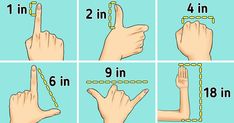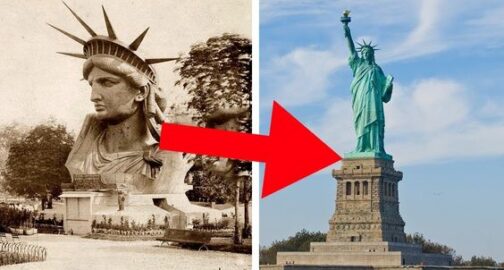
If you think that the world is becoming more insane every year, then you are only half right. In fact, strange things have always been there, and we’ve found the most convincing evidence.
Bright Side offers you 13 historical facts that will make you look at our ancestors and their way of life in a new light.
Trial by spousal combat
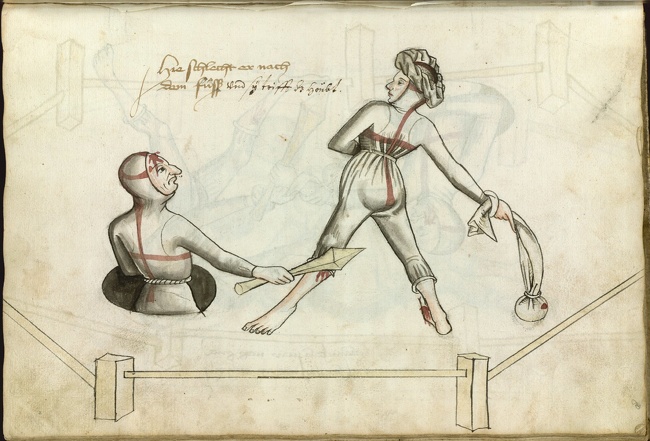
In Medieval Germany, a husband and wife could settle their disputes in a rather cruel way — a spousal duel. According to the rules, the man had to fight sitting with his waist in a pit, one hand tied to his body, and in the other hand he would hold a stick. Women were allowed to move within a limited area and use a pouch with stones as a weapon.
Destroying alcohol

Prohibition of the selling, manufacturing, and distributing of alcohol in the USA started in 1920 and lasted until 1933. During this time period, police used to check suspicious buildings and homes trying to find illegal booze, which was produced by underground breweries across the country. In the photo above, you can see prohibition agents destroying alcohol during one such raid in Detroit in 1929. This practice was pretty common during the time of ’dry’ law.
Victory won after death

Even his own death did not prevent the national hero of Spain, El Cid, from winning his last battle with the Moors. Before one of his battles, he was wounded by a poisoned arrow and died. To prevent the army from knowing about the death of their leader and losing their fighting spirit, El Cid’s wife, Jimena Diaz, put the body of her husband in his armor and set it on his horse. Strangely enough, the trick worked and the army under the “command” of the deceased hero won a great victory.
Left boot monument
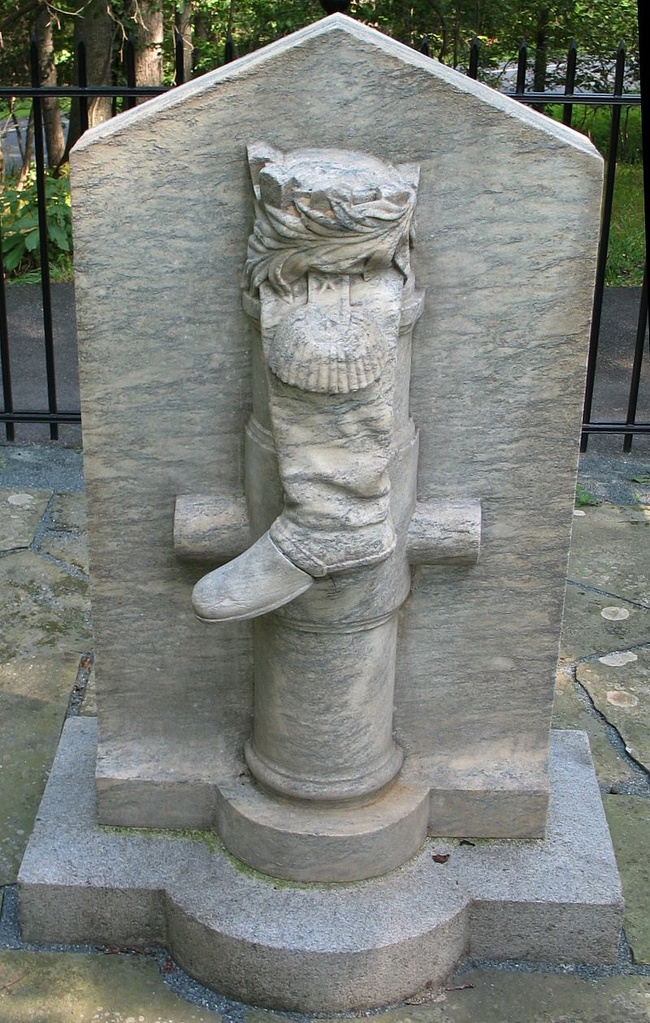
There are many strange monuments in the world. Sculptors and artists of the past were sometimes creating strange pieces of art like our present day artists do. For example, in the national historical park of Saratoga in the US, there’s a monument in honor of the wounded left foot of Major-General Benedict Arnold, a participant in the War of Independence.
It should be noted that Arnold is a very controversial figure. Although he became famous as a hero in battles on the American side, this did not stop him in the future from moving to the British side.
Animal trials

In the Middle Ages, it wasn’t just people that were taken to court, but also animals. Most often domestic animals became the implicated ones: cats were accused of witchcraft, as well as cows, chickens (in particular, the rooster that carried an egg), and pigs.
For example, in this engraving, you can see a pig that was found guilty of killing a child. The court was not ashamed of the fact that the animals could not say anything in their own defense, but the testimonies of defense witnesses were nevertheless taken into consideration.
The bell exiled to Siberia
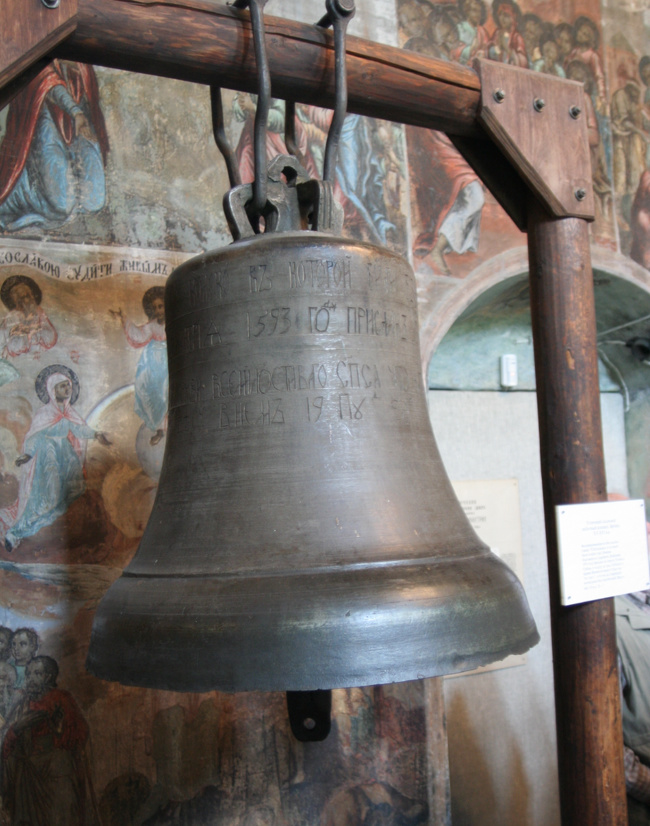
Not only animals, but even inanimate objects were subject to judgements in the past. It happened to a church bell from Uglich — it was blamed for informing the residents of the city about the death of Prince Dimitry in 1591 that caused a people’s rebellion.
The “guilty” bell was sentenced to a cutting off of the tongue and flogging, and then exiled to the Siberian city of Tobolsk, where it stayed for 300 years, after which it was returned. Today, the bell can be seen in the Uglich State Historical, Architectural, and Art Museum.
Death for beauty’s sake

The fashionable quest for marble white skin and bright blush that existed in the 17th and 18th centuries was truly devastating. Ceruse, or white lead, only worsened the skin’s condition and forced fashionable girls to apply this “cosmetic” in thicker layers. But the worst part was that this toxic makeup sometimes led to death.
The beautiful Countess’ name that you see in this portrait was Maria Coventry and she went down in history as a “makeup victim,” having died on September 30, 1760 at only 27 years old from lead poisoning. But even these types of incidents did not stop ladies in their pursuit of fashion and attractiveness.
Baby cages
Invented in 1922, these cages gained great popularity among Londoners. There was an idea, that became extremely widespread among British moms, that kids need to be ’aired’ in order to purify their blood. These wired cages, fixed to outside windows, were a great solution for those families that lived in city apartments. A child could stay in the cage getting the needed sunshine while his mom was busy doing her household chores. By the middle of the 20th century, the popularity of this device declined due to safety concerns.
Dyeing teeth black

This tradition, strange for most modern people, was common among the people of Southeast Asia, South America, Japan (it is known as “ohaguro” there), Africa, and Western Europe in the 16th and 17th centuries. Surprisingly, in some places the blackening of the teeth is still present today.
There are several ways to explain the appearance of this custom: the desire to hide the bad state of teeth, to protect teeth from decay with the help of a special varnish, or to create the illusion of teeth affected by decay, as this disease in those days indicated that you were rich because only rich people could allow themselves to indulge in eating sugar.
Puncturing the body with various weapons

The Dutch artist and designer Mirin Dajo (real name — Arnold Gerrit Henskes) became famous for being able to pierce his body with swords and other weapons without harm. Performing in front of the public, he also ate glass and blades that did not phase him, unlike his spectators that often fainted when hearing the sound made by a sword when it grazed the bone (there was also no bleeding when he did these things).
There is still no explanation of how these dangerous stunts worked for Dajo, but it’s for certain that he unfortunately was not completely invulnerable. He died while trying to swallow a needle.
Headless portraits
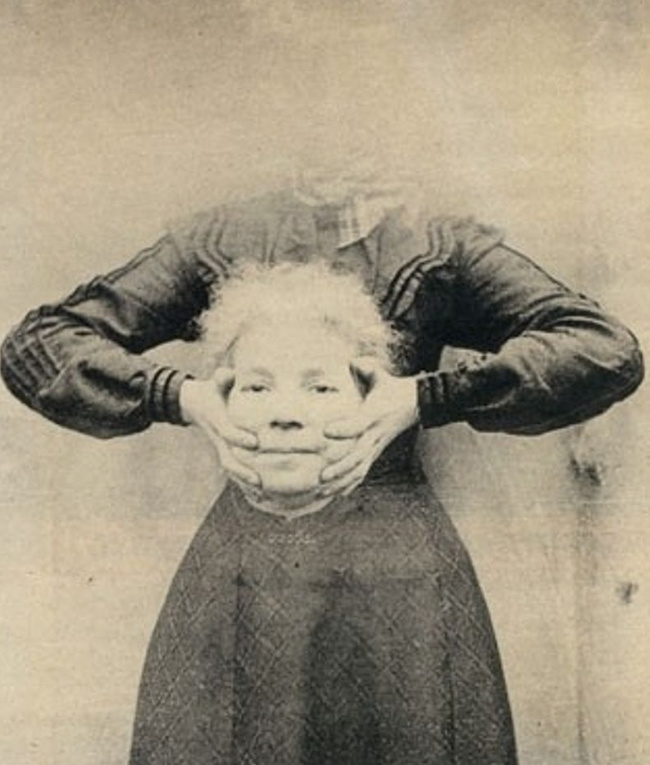
With the advent of the Victorian era, people were bored with the usual portraits, and thanks to the development of photography, a new and relatively quick way to capture yourself in all your glory appeared. There were different kinds of fads in those days too — for example, photos without a head. The lack of photoshop was compensated by the sharp mind of photographers manipulating the negatives and retouching.
Mummy of new era
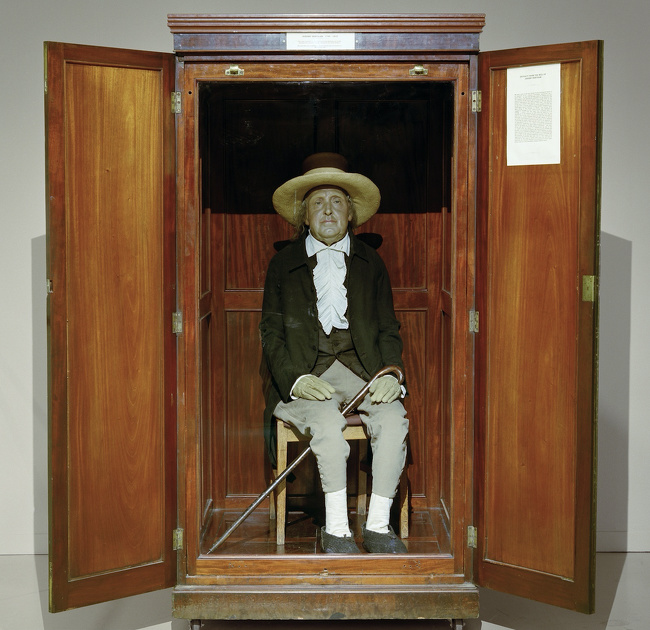
English philosopher of the 19th century Jeremy Bentham had an outstanding personality. He was the first to introduce the concept of “state responsibility” to citizens, was a supporter of women’s equality, advocated for animal rights, and defended the principle of the greatest happiness for the greatest number of people.
But as is often the case with extraordinary personalities, Bentham had some strange personality traits. In his will, the philosopher asked to have his skeleton put in the same position that he was sitting in during his lifetime at the University College of London where he held his lectures. The unusual request was fulfilled exactly the way he wanted, although Bentham’s head was replaced with a wax copy for the sake of presentability.
Testing bulletproof vests on people
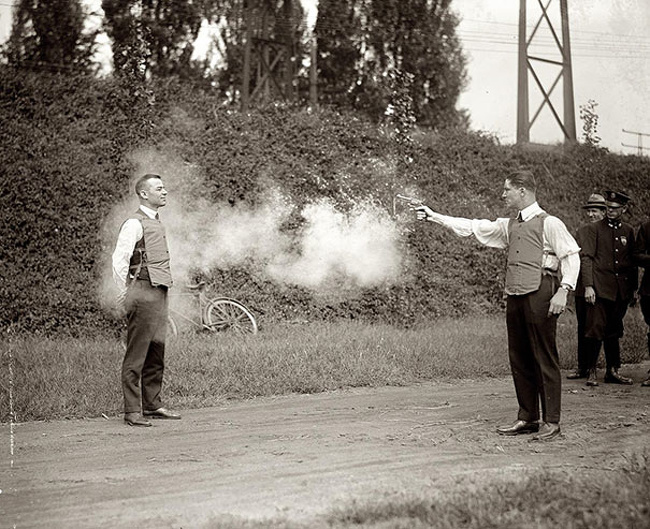
Bulletproof vests gained their popularity during the Great Depression. Since then the crime levels in the US have increased greatly. And, those vests had to be tested first to be sure that they worked before fighting with criminals. There were men who would volunteer to wear these bulletproof vests and take turns shooting at each other.
In this photo, you can see WH Murphy and his assistant (the investor and the salesman) performing a live demonstration of a recently manufactured bulletproof lightweight vest by the Protective Garment Corporation of New York in 1923. The demonstration took place to prove that these new vests, manufactured for police use, are as good as all others. After the demo, one of the police officers took a chance to try out the effectiveness of the vest and shot 2 bullets from a 10 ft distance to Murphy’s chest. Murphy proved that his new vest worked and presented the deflected bullet to the officer as a souvenir.
Which of these things shocked you the most? Please tell us about it in the comments!
Preview photo credit Walter P. Reuther Library, SIR LANCELOT KL.



